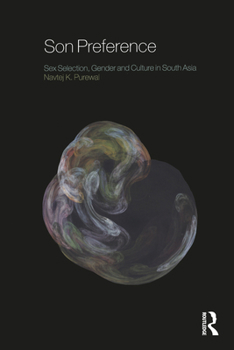Son Preference: Sex Selection, Gender and Culture in South Asia
Select Format
Select Condition 
Book Overview
The preference for male children transcends many societies and cultures, making it an issue of local and global dimensions. While son preference is not a new phenomenon and has existed historically in many parts of Asia, its contemporary expressions illustrate the gendered outcomes of social power relations as they interact and intersect with culture, economy and technologies.
Format:Hardcover
Language:English
ISBN:1845204670
ISBN13:9781845204679
Release Date:April 2010
Publisher:Routledge
Length:160 Pages
Weight:0.83 lbs.
Dimensions:0.6" x 6.3" x 9.2"
Customer Reviews
0 rating





